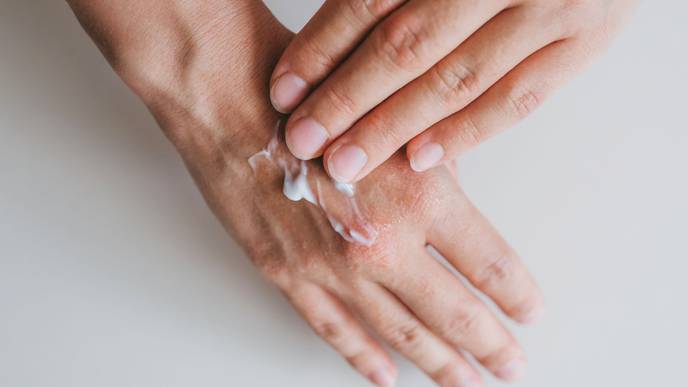ReachMD
Be part of the knowledge.™Unpacking the AAD’s Updated Guidelines for Managing AD with Topical Therapies in Adults

Despite the availability of systemic medication to treat atopic dermatitis (AD), topical treatments remain mainstays, and new ones have come to market in recent years.
To keep pace with the changes, the American Academy of Dermatology (AAD) updated its 2014 guidelines for managing atopic dermatitis (AD) with topical therapies in adults.
The updated guidelines comprise 12 recommendations for treating adult AD with topical therapies including nonprescription agents such as moisturizers, prescription topical corticosteroids, topical calcineurin inhibitors (TCI), JAK inhibitors, PDE4 inhibitors, antimicrobials, and antihistamines.
“There have been two novel topical medications, crisaborole 2% ointment and ruxolitinib, 1.5% ointment, and two novel systemic medications approved to treat mild to moderate AD since the last guidelines were published and more poised to be approved this year,” says Robert Sidbury, MD, MPH, chief of dermatology at Seattle Children's Hospital in Washington, who served as co-chair of the workgroup. “Dermatologists must stay current with regards to new options and evolving information about old medications and associations to take the best care of their patients,” Dr. Sidbury tells DermWire.
Moisturizers, topical calcineurin inhibitors (TCIs), topical steroids, topical PDE-4, and JAK inhibitors are all strongly recommended for managing AD in adults. Bathing and wet wrap therapy were advised against, and topical antimicrobials, antiseptics, and antihistamines were given conditional recommendations.
The updated guidelines also take on the controversial subject of topical steroid addiction/withdrawal (TSA/W).“From the standpoint of older medications, topical steroids continue to be an important first-line therapy so updating safety and efficacy data was part of our mandate, but we also called out the concept of topical steroid addiction/withdrawal which had not been mentioned in the prior 2014 iteration of the AAD AD Guidelines,” he says. “This is a concept that has generated considerable discussion online but for which there is little good evidence, and this evidence "gap" can lead to patient concern and therapeutic non-adherence so we reviewed the evidence that does exist.”
The main consistent risk factor associated with TSA/TSW is prolonged, inappropriate use of potent topical steroids on the face or in intertriginous areas, which would be inadvisable in any case, the guidelines state.
TCIs do not seem to increase cancer risk “The latest studies surrounding cancer risk and the boxed warning were reviewed and ultimately deemed likely not clinically meaningful, he says.
The full guidelines appear in the Journal of the American Academy of Dermatology.
Facebook Comments